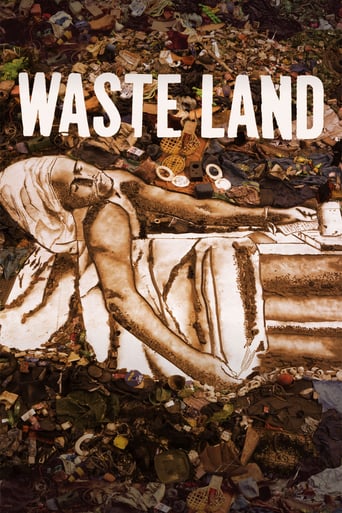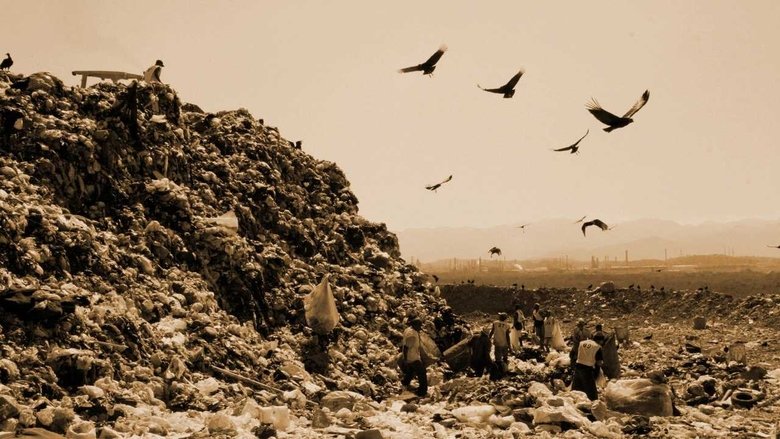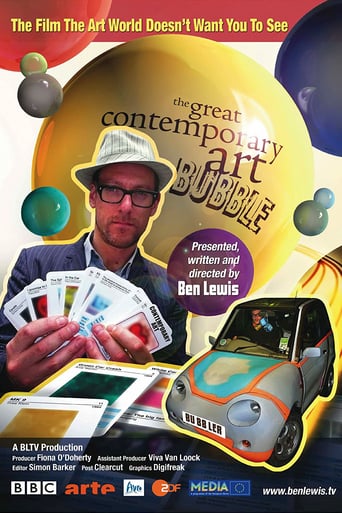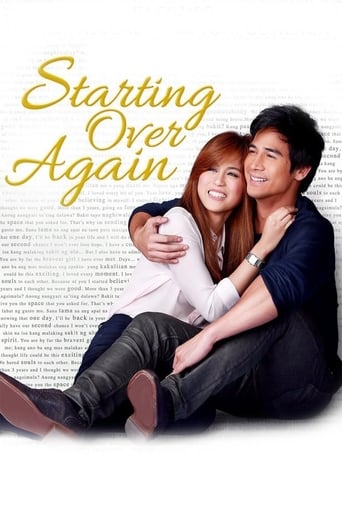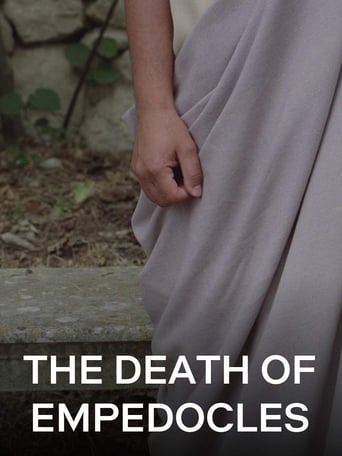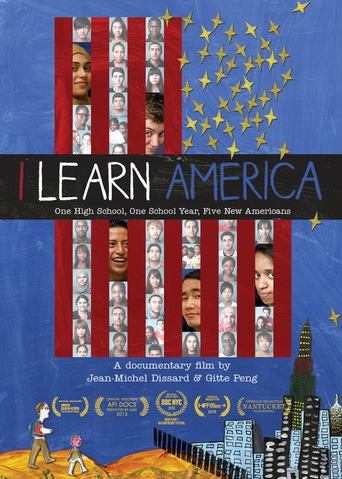Waste Land (2010)
An uplifting feature documentary highlighting the transformative power of art and the beauty of the human spirit. Top-selling contemporary artist Vik Muniz takes us on an emotional journey from Jardim Gramacho, the world's largest landfill on the outskirts of Rio de Janeiro, to the heights of international art stardom. Vik collaborates with the brilliant catadores, pickers of recyclable materials, true Shakespearean characters who live and work in the garbage quoting Machiavelli and showing us how to recycle ourselves.
Watch Trailer
Free Trial Channels
Cast


Similar titles
Reviews
That was an excellent one.
Good story, Not enough for a whole film
Excellent, a Must See
Amateur movie with Big budget
The documentary Wasteland is about the story of how Vik Muniz discovered the art of recycling. He goes to Brazil where he finds people who are known as pickers. Pickers go to a land fill to go through trash and find valuable things that can be recycled. The landfill is the biggest dump place for trash in the entire country. 100% of Brazil's trash ends up in this land fill but only 70 % of the trash is from Rio, where the landfill is located. Sometimes people will even find dead bodies in the landfill. In the movie there were a variety of pickers who each have their own stories about their life and why they choose to be a picker. Pickers deserve more honor than they receive. They would rather go through the landfill than sell drugs or get involved with prostitution. There is one young woman who is a picker and has 2 kids. She decides for her life that she doesn't want to be a prostitute. There was a young man who was the most deceiving about the whole idea of being a picker while no one else believed in him he believed in himself. He was very precise and he achieved what he believed in which was a very influential.The reason why people should watch this is because it's very inspirational and the artwork of what Vik Muniz and the team of pickers did was artistic and innovative. It made it look like it was more than just trash. People who are interested in the art industry should watch this too. Wasteland is the perfect example of a win-win situation.
Waste Land is a true classic depicting inner humane values radiating through art forms of exuberance. Vik Muniz's extraordinary artistic zeal spiced with humanity in collaboration with those true aspirations of the characters that the former portrait gives the entire plot a genuinely vibrant touch. It ignites the recycling power of our inner self as it makes us feel the universal human appeal more deeply then ever. It allows us to peep through the vibrant colorful membrane of civilization straight into the lives of those standing at the 'fundamental sphere' of d civilization super structure, coping up with life with whatever means they are provided with....living rather in their own happy times sans any involvement in petty vices of so called "modern civilized society". But still they are human...they have been unable to acquire the taste of life in fullest terms but they still possess that zeal to improvise their life style, at least into another level. Vik Muniz just provided them that platform,standing on which they can at least level up themselves with the other lot of the society. Simply a Masterpiece!!!
Is a good cause an excuse to produce bad art? Not in my book. And there is even less reason to make a film about it. It's an entertaining watch, I'll give them that. Beautiful shots of a Brazilian dump teeming with pickers and scavenging birds are best viewed from the comforts of you local independent cinema. The music swells to a heartwarming crescendo when the goodhearted artist takes that poor Brazilian waste picker to London on his first journey into the first world. And the artist, being a true philanthropist, doesn't stop at showing handpicked members of the Brasilan underclass, what his flashy world is like, no he makes sure from the start that the final profits of his pictures will go straight to those poor bastards. While the lucky sod breaks down and weeps as the picture is auctioned for 28000 pounds, Vik Muniz even takes the time to give him a short introduction into modern art.What makes this so unbearable to watch is the artist's complete lack of irony and, well shall I say humbleness, and the filmmaker can't be too keen on that either. Fairly early in the proceedings Vik and his wife sit in front of the computer screen that depicts Brasilians largest landfill and the artist announces proudly that this is where he is going to live for the next two years, while he, his wife and the audience knows pretty well that he's not going to do anything of that sort. But now we know what Lucy Walker is trying to tell us and we feel cheated. Namely that here we have a man who deeply cares about his fellow citizens, but if he really was the altruistic person that this film tries to makes us believe, he would have been more concerned about the plight of the people and less with portraying himself as this selfless do-gooder. This culminates in the scene when, towards the end - all the money came in already- the artist asks the black underdog if, at the very beginning when this crazy artist showed up on the dump, and told him about his vision of making art out of garbage, if he (the underdog) had realistically believed it would amount to anything, let alone a major show at the National Museum in Rio, the underdog is humbled into sheer awe, when in fact he should have answered: Well, as you had a full camera team with you, to document every step you did, I had an inkling that the whole thing would have an happy ending:' And maybe he even said something like that but it sure as hell got cut out for the final edit, cause although the director wants us to believe otherwise, the whole thing seems staged.
Following in the path of Edvard Munch who said, "I will paint living people who breathe and feel and suffer and love," artist Vik Muniz travels from his studio in Brooklyn to Rio de Janeiro to "give back" to the people of Brazil where he was born and raised. In Lucy Walker's (Countdown to Zero) inspiring documentary, Waste Land, winner of the Audience Award for World Cinema Documentary at the Sundance Film Festival, we are taken inside the squalid landfill known as Jardim Gramacho on the outskirts of Rio to see the largest garbage dump in the world where 7,000 tons of Rio's trash is deposited every day. The film is seen through the eyes of the "pickers," called catadores who live and work in this squalid environment, eking out a living of $20-25 U.S. a day.The catadores, who number in the thousands, work under burning hot sun and overpowering odors collecting and selling recyclable materials such as bottles, plastic, and metal to wholesalers and middlemen who turn them into such resalable items as buckets or bumpers for automobiles. Vic Muniz' plan is to select and paint a group of six catadores to pose as photographic subjects that will mimic such classic paintings as "The Death of Marat" by Jacques-Louis David. Money from sales of the resulting art will go to the pickers association for the benefit of the workers. The project included Tiao, the leader of ACAMJG (Association of Collectors of the Metropolitan Landfill of Jardim Gramacho) who went on a hunger strike to dramatize the conditions of the pickers and built an organization that helped create a skills-training center and a medical clinic for the workers.There was also Zumbi, a member of the association, who began a library from his home from books that had been discarded, Irma, a cook who makes stews and roasts from edible meat to feed the workers, Suelem, an 18-year old girl who has been working in the garbage dump since she was only seven years old, and Valter, an elderly man who entertains with stories and songs and who decides to participate because he believes that "it will raise awareness of all us pickers." Once the initial photographs are made, Muniz projects an enlarged version of each photo onto the floor of his studio and hires the pickers to add refuse from the landfill onto the canvas, photographing the result from overhead. This then becomes the finished art work, ready to be exhibited at auctions and museums around the world with the pickers traveling to such cities as London and New York, the first time they have ever left Gramacho.Waste Land is not only a biography of an artist, but a look at the artist in the context of the community in which his art is created. Muniz reveals the courage and resilience of the people in spite of their grinding poverty and depressing environment. Many are former middle class residents of the suburbs who chose the life of the picker rather than becoming prostitutes or drug dealers and are happy with their choice. Though Muniz's goal was, "to be able to change the lives of a group of people with the same material that they deal with every day," he never dreamed that his work would impact the lives of the people so dramatically.Through his efforts, many of the residents who worked for him have changed their life and either reconciled with their families or gone on to more rewarding jobs. Modernization has also begun to take shape at Gramacho. A recycling plant has been built and the workers have been separated into categories for more efficient organization. Though admittedly just a beginning, Muniz has demonstrated that the power of art is available to all people regardless of their circumstances, allowing them to experience their inner beauty and believe in themselves in a new way. Not succumbing to the temptations of melodramatic excess, Waste Land has been shortlisted for an Oscar for Best Documentary and fully deserves to be among the finalists.

